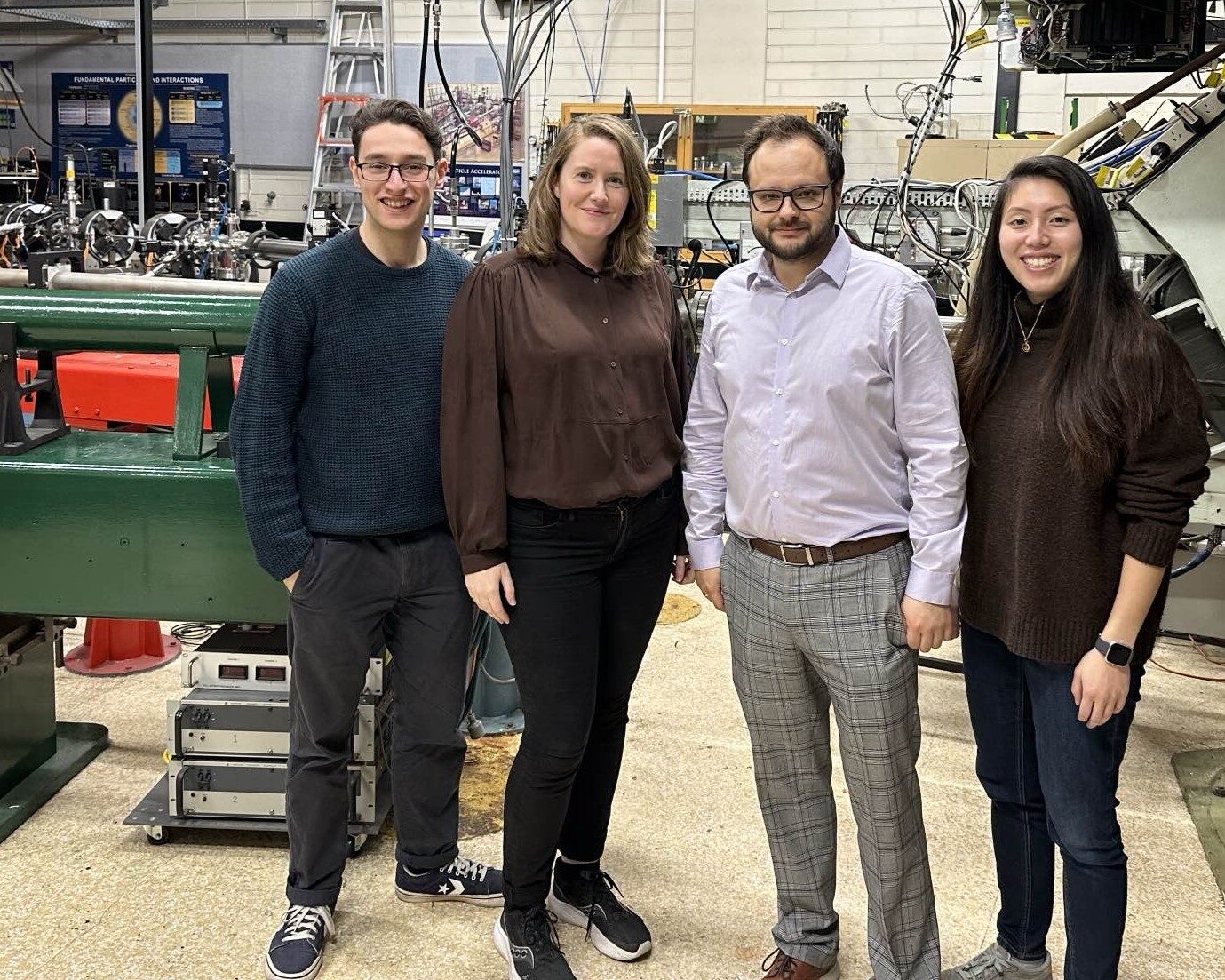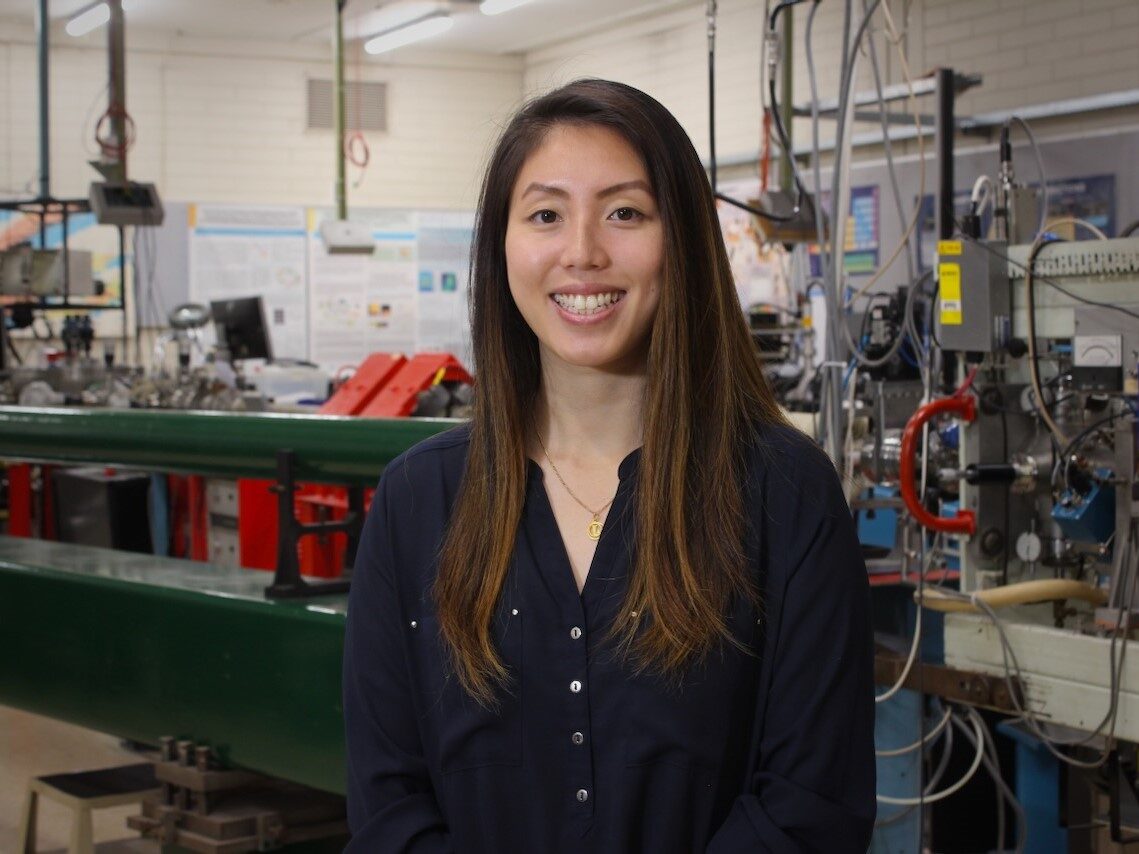For physicist Dr Jacinta Yap doing something that benefits human lives is essential in her career.
“Physics is a really broad field, and I was hoping to find fulfilment in a career where I could work on something which had societal benefit,” says Jacinta, a Research Fellow in the Medical Accelerator Physics group at the University of Melbourne.
Jacinta is working on improving proton beam therapy, which is used to treat cancer. She brings to bear her training in engineering, medical and accelerator physics, underpinned by a love – and a flair for – solving problems.
“Proton therapy hasn’t reached its full potential yet: it’s a relatively new field so there’s room for many advances which can end up being implemented in the clinic.”
A turning point for her came at the end of her undergraduate degree in mechanical engineering, at University of Western Australia, in her home town of Perth.
She was good at maths and sciences, and her brother and her father were both mechanical engineers, which seemed like a good career path. But she realised she didn’t want to follow many of her classmates into the oil and gas industry, and instead learned about a Masters in Medical Physics at the University of Wollongong.
It was a big gamble and a steep learning curve, going from engineering to picking up a lot of the more in-depth physics subjects such as electromagnetism and quantum mechanics.
“I didn’t know anyone in Wollongong, and didn’t really know much about this course or career pathway. But I thought, I’ll just go for it and see what happens,” Jacinta says.
The course was life-changing, introducing her to different avenues of physics, such as the application of radiation for cancer treatment and also opened up overseas opportunities after the Masters, starting with a PhD at the Cockcroft Institute & University of Liverpool in the United Kingdom.
Jacinta says moving to a new place to study something completely different was tough, but it’s given her confidence, and she hopes other women will seize opportunities in a similar way.
“Often things may seem too difficult, but you will never know until you try,” she says.

Now part of the Medical Accelerator Physics group at the University of Melbourne, Jacinta is part of a team working on a project named TURBO (Technology for Ultra Rapid Beam Operation).
The team have just won a grant funded by the US National Institutes of Health to develop TURBO to improve the delivery of proton therapy, as part of an international academic-industrial collaboration led by Massachusetts General Hospital (MGH) and Harvard Medical School, Boston, in the United States.
The focus of TURBO is to find better ways to deliver proton beams for treatment, by being able to transport beams of varying energies quickly, a process known as energy layer switching.
Proton therapy provides a more effective way of irradiating tumours but is currently much more expensive than conventional radiation therapy, which is based on X-rays.
While X-rays pass through a tumour and the tissue around it, causing indiscriminate damage, proton beams can be finessed so they penetrate only as far as the tumour and stop there. A serendipitous quirk of physics called the Bragg peak means that in the last moments of travel the protons deposit the majority of their energy – if you get the beam energy just right then you can treat the tumour without doing so much collateral damage.
And by changing the beam energy you can irradiate the full depth of the tumour – but with current technology having to continually adjust the magnets that steer the beam is time consuming, leaving the patient lying uncomfortably in the machine, while expensive minutes tick by.
“We looked at the problem and realised the fundamental limitation wasn’t the physics, but the delivery technology itself,” Jacinta says.
The team believe they can build a beamline that can steer beams with a range of energies along the same final delivery path, which could improve proton therapy’s price, throughput, treatment quality and patient comfort significantly.
The experiment itself is also a money saver. It builds onto the existing Pelletron Accelerator at the University of Melbourne Heavy Ion Accelerators node and is being done at a much smaller scale and energy regime.
“To do this at full scale is very expensive, you need really large equipment and facilities. We are scaling it down and aiming to really understand the underlying physics and the challenges in building such a system,” Jacinta says.
“We can scale up the design and technology later for clinical implementation.”
To find out more about TURBO project, watch a video interview with Dr Yap and Dr Steinberg.
Dr Yap’s recent publications:
- Design of a large energy acceptance beamline using fixed field accelerator optics doi/10.1103/PhysRevAccelBeams.27.071601
- Progress Toward TURBO: A Novel Beam Delivery System for Charged Particle Therapy doi/10.1088/1742-6596/2687/9/092004
- Future Developments in Charged Particle Therapy: Improving Beam Delivery for Efficiency and Efficacy doi.org/10.3389/fonc.2021.780025
